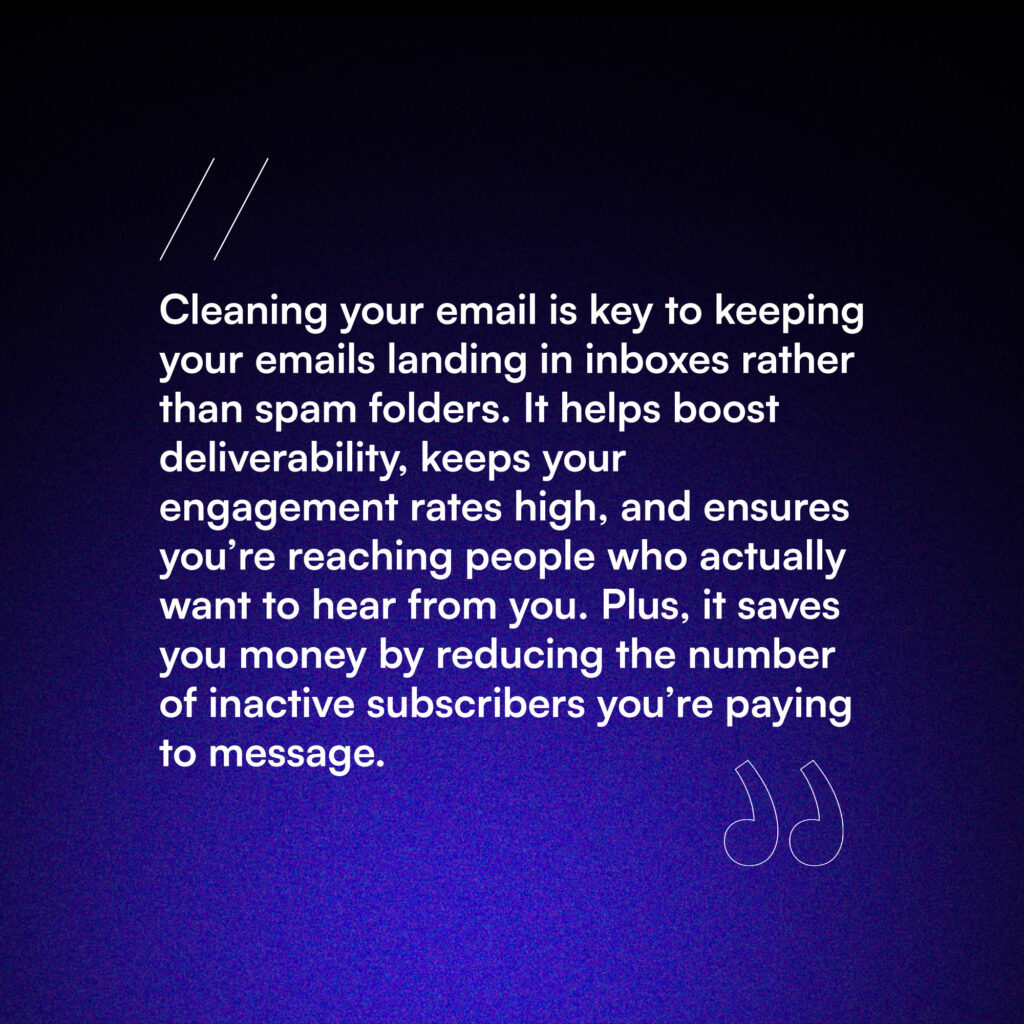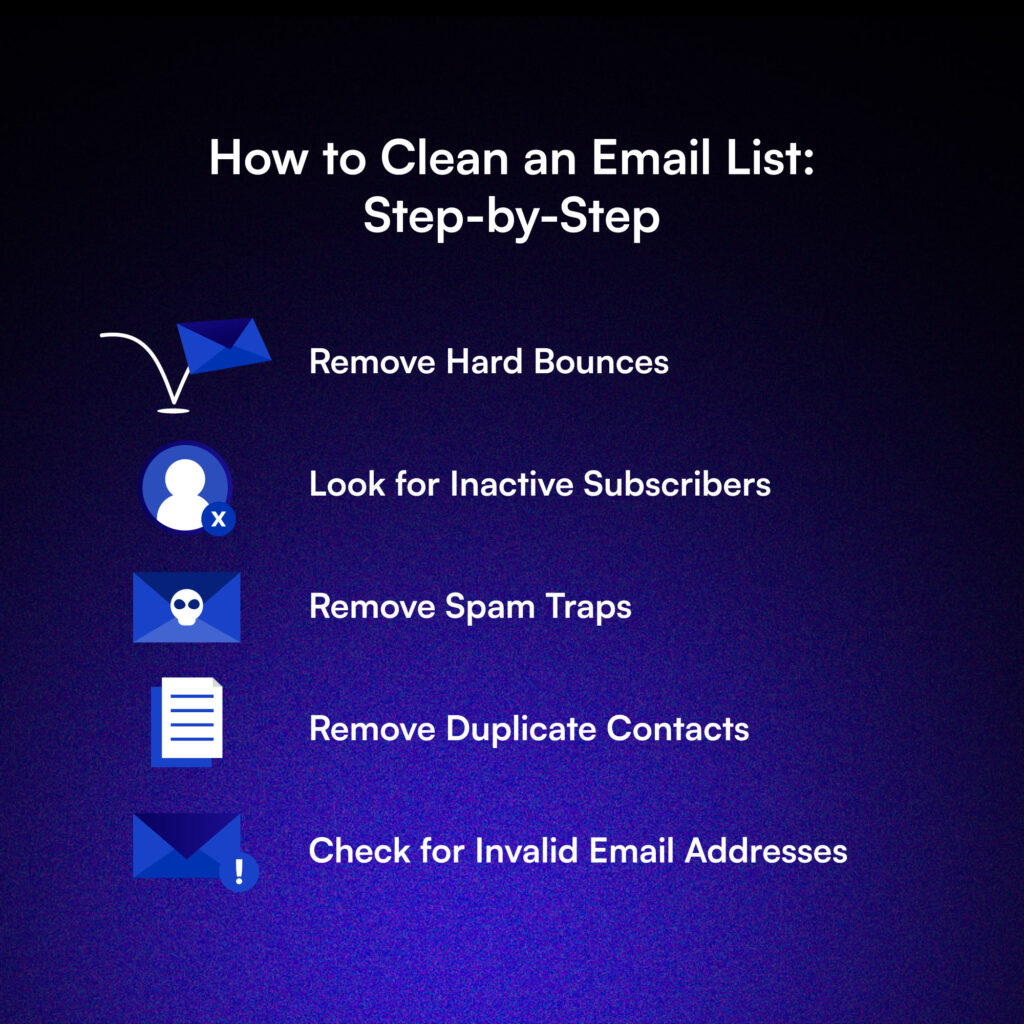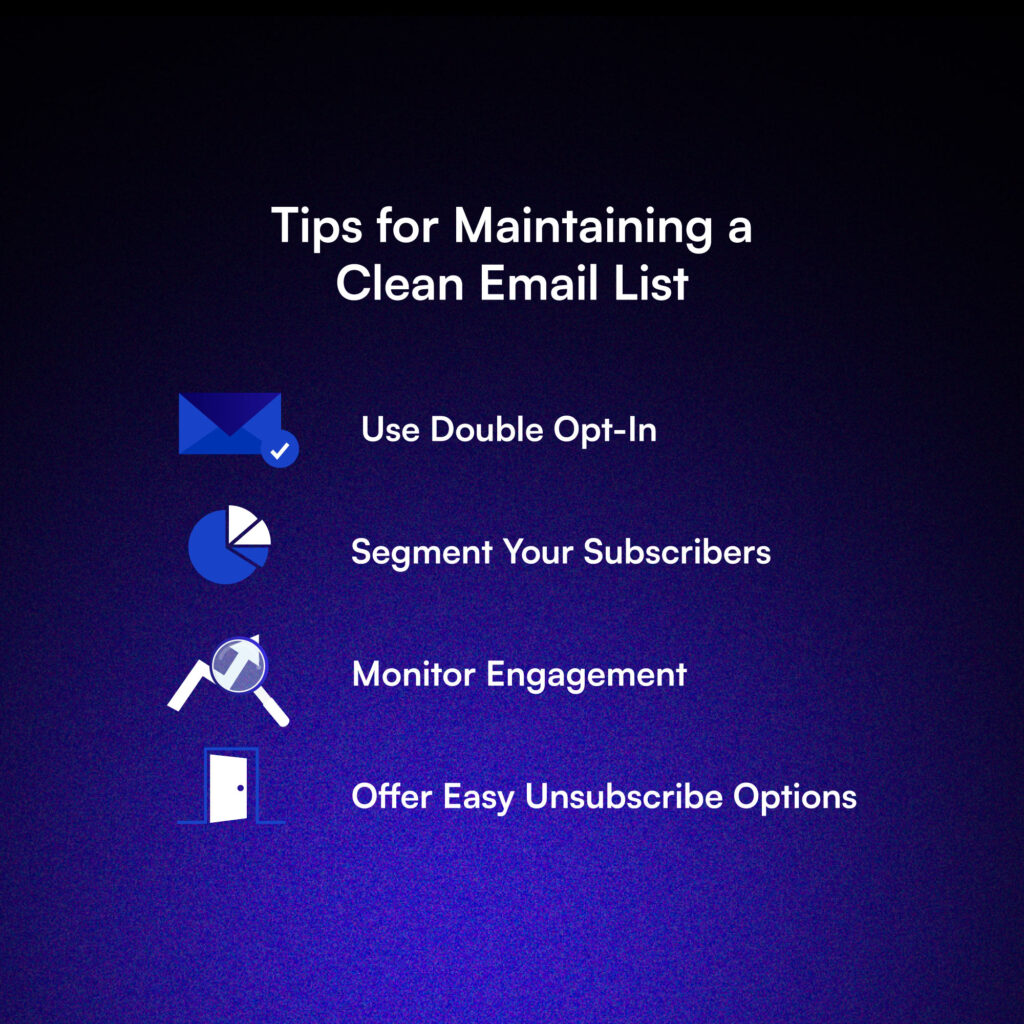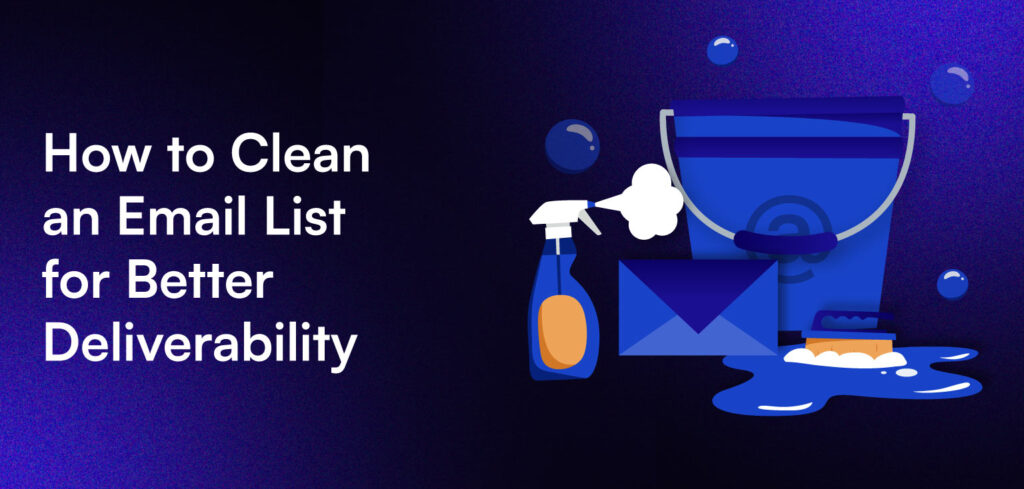Why Cleaning Your Email List Is Important
- Bounce Rates: Both hard and soft bounces can impact your sender score.
- Spam Complaints: If recipients mark your emails as spam, it raises red flags with providers.
- Unsubscribe History: High unsubscribe rates may suggest that recipients are not finding value in your emails.
- Spam Traps: Sending emails to spam traps (addresses used solely to catch spammers) negatively affects your reputation.

Read this next: List Growth Rate: What Is It And How Can You Maximize It?
The Dangers of a Dirty Email List
- Increased Bounce Rates: A high bounce rate—especially a hard bounce (when an email is sent to an address that doesn’t exist)—signals to email service providers (ESPs) that your list is unclean, which could hurt your reputation.
- Spam Complaints: If you’re sending emails to people who didn’t opt-in or aren’t interested, they’re more likely to mark your emails as spam, which further hurts your reputation.
- Low Engagement Rates: If you’re constantly emailing people who aren’t engaging with your content, it lowers your open and click rates. Low engagement signals to ESPs that your emails aren’t valuable, which can negatively impact future campaigns.
- Waste of Resources: By sending emails to invalid or non-responsive contacts, you’re essentially throwing money away. This wastes your marketing budget and your time.
How to Clean an Email List: Step-by-Step
Now that you understand why it’s important to clean your email list, let’s go over exactly how to do it. Follow these steps to ensure your email list is fresh and ready to perform:

1. Remove Hard Bounces
2. Look for Inactive Subscribers
3. Remove Spam Traps
Spam traps are email addresses used to catch spammers, and they come in two main types: pristine and recycled. Understanding the difference between them is crucial for maintaining a clean and effective email list.
Pristine Spam Traps
Recycled Spam Traps
Why Does This Matter?
4. Remove Duplicate Contacts
5. Check for Invalid Email Addresses
Things to Take Into Consideration Before Cleaning Your Email List— Conducting a Re-Engagement Campaign
Bonus Tips for Maintaining a Clean Email List
Maintaining a clean email list doesn’t end once you’ve cleaned it up. It’s an ongoing process, and keeping your list in good shape is just as important as the cleanup itself. Here are a few tips to ensure your email list stays fresh and effective:

1. Use Double Opt-In
This is a simple but effective way to ensure that only those who truly want to be on your list are added. When someone subscribes, they’ll need to confirm their email address by clicking a link in a confirmation email. This reduces the risk of fake or invalid sign-ups, giving you a more engaged and genuine audience from the start.
2. Segment Your Subscribers
One of the best ways to keep your emails relevant is by segmenting your list regularly. Whether it’s based on behavior, demographics, or engagement, segmentation helps you send the right content to the right people. This ensures that your messages feel personalized and valuable, boosting your overall engagement.
3. Monitor Engagement
Keep a close eye on your email performance metrics, like open rates, click-through rates, and conversions. A sudden drop in these numbers could signal that your list needs some attention. It might be time to clean up inactive or disengaged subscribers, which helps improve your deliverability and ensures you’re connecting with the people who care.
4. Offer Easy Unsubscribe Options
This might seem counterintuitive, but making it easy for people to unsubscribe is actually a win-win. Not only is it legally required (thanks to CAN-SPAM laws), but it helps keep your list clean by removing those who aren’t interested. A clutter-free list is a more effective one, and having clear unsubscribe options can build trust with your subscribers.
How Often to Clean Your Email List
- For Small to Medium Lists: Clean your list every 3-6 months. This gives you time to identify inactive subscribers, hard bounces, and any other issues that may arise.
- For Large Lists: If you’re working with a large email list (over 10,000 subscribers), it’s best to clean it every 1-3 months. With large lists, there’s a greater chance of having invalid email addresses or inactive subscribers, so more frequent cleaning is necessary.
- After a Campaign: If you’ve run a particularly large or complex campaign, clean your list afterward to remove any email addresses that bounced or showed no engagement.


